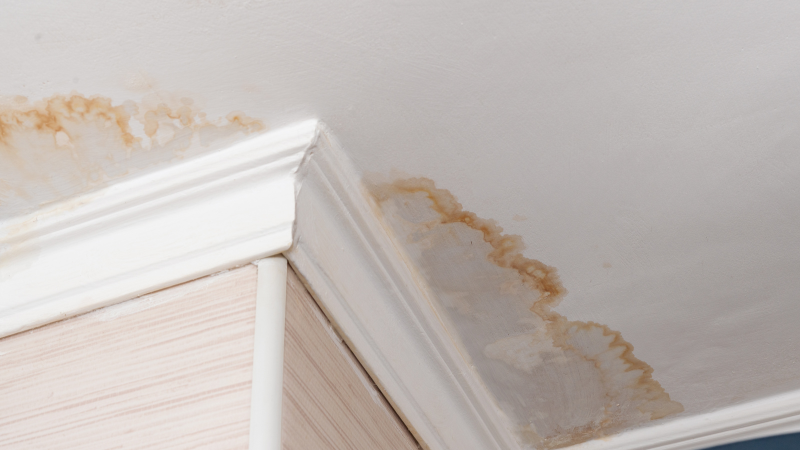This article in the next paragraphs in relation to How to Repair and Prevent Bathroom Water Damage is rather informative. Don't miss it.

The restroom is incredibly susceptible for damp build-up and potential water damage due to the frequent use water in it. This write-up supplies straightforward examination strategies to assist finding water damage risks.
The frequent use of water in the bathroom makes it exceptionally at risk for damp build-up as well as potential water damage. By checking it on a regular basis, you can decrease water related damages.
The adhering to set of inspections is very easy to execute as well as ought to be done once in every 3 months in order to maintain your restroom in good shape and also to prevent potential water damages brought on by the bath tub, the shower, pipeline joints as well as plumbing, sinks, cabinets, and the commode
Do not forget doing these assessments as well as be comprehensive while performing them. Remember that these basic assessments can save you a lot of cash by supplying early indications for water damages
Sinks as well as Cabinets
Sinks as well as cabinets are revealed to wetness and humidity day-to-day as well as are frequently forgotten. Check routinely under the sink and on the kitchen counter above it. Repair any kind of drip in the trap as it may recommend drain troubles. Check out the sink, sluggish draining pipelines may show a blocked drainpipe. Replace sink seals if they are fractured or loose.
Bath tub and Shower
The shower and also bathtub call for special focus and upkeep. Check the ceramic tiles and also replace if cracked. Make sure that there is no missing out on grout in between the tiles. Check and change fractured caulking at joints where the walls fulfill the floor or the bathtub. Obstructed drains as well as pipelines problems will protect against the bathtub from drying out and also might suggest significant issues under the bathtub. Seek advice from a professional promptly to prevent architectural damages. Take note of stainings or soft areas around the tub wall surfaces as they may show an internal leak.
Plumbing
Signs for water damages are hard to find since many pipelines are installed inside the walls.
Pay unique attention to flooring and also walls wetness and also stains as they may suggest an invisible plumbing issue. Inspect dampness levels in adjoining areas too.
The Commode
The toilet is a susceptible water junction. Inspect the water lines and also look for leakages around the toilet seat, in the hose, as well as under the water storage tank. If you find any kind of indicators of moisture on the flooring around the commode, check for leaks in the toilet rim as well as storage tank seals.
Know that hanging bathroom dish antiperspirants raises the opportunities for obstructions.
TIPS TO PREVENT WATER DAMAGE IN THE BATHROOM
The average household uses approximately 80-100 gallons of water per person per day. For a family of 4, that's almost 2,500 gallons of water a week! The largest portion of this consumption comes from bathroom use. Flushing the toilet uses the most water, followed by taking a shower or bath. With that much water running through the home, water damage in the bathroom is bound to happen. Knowing how to spot signs of a water leak is essential to preventing long-term damage. This guide provides you with tips to reduce the impact of water damage on your bathroom.
CAUSES OF BATHROOM WATER DAMAGE
Pipe breaks are the most common cause of water damage we see in our daily jobs. The age of a pipe plays a large role in a pipe break as well as corrosion. Over time, the metal begins to break down, allowing water to escape. Frozen pipe breaks are also a concern in the winter months. Toilet overflows caused by paper products or children flushing inappropriate items. Degraded caulking around the toilet or bathtub can allow water seepage, sometimes behind the fixture, into the subfloor or walls. Condensation forms when the water in a pipe is cooler than the air temperature. Beads of water form on the exterior of the pipes, sometimes so much so that the water begins to drip and pool below. Sink or shower backups created by poor drainage. HOW TO PREVENT WATER DAMAGE IN YOUR BATHROOM
Inspect your toilet supply line for worn or frayed hoses and replace them as needed. Winterize your plumbing to prevent a frozen pipe break. Use vent fans to prevent condensation that can lead to mold growth. Routinely check and replace degraded caulking around your toilet or bathtub. Increase the temperature in your toilet tank and insulate your pipes during the warm summer months to keep condensation from forming. Use child safety locks on the toilets. Flush only toilet paper. "Flushable" wet wipes are actually not good for your plumbing system. Additionally, feminine hygiene products should not be flushed. Prevent water from escaping the tub or shower. Make sure shower curtains are in good condition. Inspect shower doors and replace the seal strip if necessary. Wipe up any water that accumulates on the floor and use bath mats. Water left to sit can cause damage to the tiles and flooring. Refrain from using bath products containing heavy oils to avoid a clogged drain.

I came across that page on Preventing Water Damage in the Bathroom while perusing the search engines. Loved our blog posting? Please share it. Help other people locate it. Thanks a lot for your time. Visit us again soon.
More Details